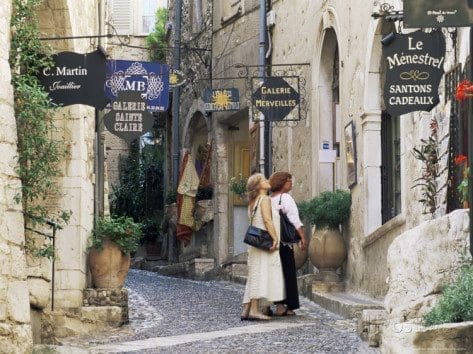The toughest bicycle ride in the world? Four thousand kilometers over the toughest and best known cols in France!
The Hundred Cols Tour is the ultimate challange for the bicycle rider. 4000km overr all the great mountain areas of France, passes more than hundred cols and almost sixty côtes. This is an individual challenge. Whoever succeeds in doing this tour may find himself under the strongest riders in the world. The Hundred Cols Tour can only be done by riders that have a tremendous perserverance. Indeed: The Ultimate Challenge..
History
This route “100 Cols Tocht” was introduced in 1979 by the NTFU (Nederlandse Toer Fiets Unie, the Dutch sport cycling association). Immediately there was a lot of interest. Shortly afterwards, they stopped their interference, until a few members from the Utrecht cycling club RTC De Domstad decided to do the route and adapted it over the years. In 1983 they first published it. In 2003 the Tour was further taken care of by the Hundred Cols Foundation. Since 1979 more than 1000 participants have subscribed of which more than 200 have finished, some of them even a few times. It’s a very challenging, tough but incredibly beautiful ride. Many newspapers and magazines have already reported about it.
This route “100 Cols Tocht” was introduced in 1979 by the NTFU (Nederlandse Toer Fiets Unie, the Dutch sport cycling association). Immediately there was a lot of interest. Shortly afterwards, they stopped their interference, until a few members from the Utrecht cycling club RTC De Domstad decided to do the route and adapted it over the years. In 1983 they first published it. In 2003 the Tour was further taken care of by the Hundred Cols Foundation. Since 1979 more than 1000 participants have subscribed of which more than 200 have finished, some of them even a few times. It’s a very challenging, tough but incredibly beautiful ride. Many newspapers and magazines have already reported about it.
Route
Since 1979 the route has changed considerably. In 1983 we added the Couillole, Bonnette and Grand Colombier. The second major adaption was in 1989, when nearly 1000K was changed as the mountain roads are getting more and more popular than ever. In this way Marie Blanque and Ballon d’Alsace were added and Haguenau became the new starting point, instead of Wissembourg, which replaced Bitche. Nowadays it’s Saverne in the NE of France, just NW of Strasbourg. Since 1992 the route was adapted every two years, latest in 2005, and alternatives were searched for busy roads.
The itinerary is a sequel of mountainous areas. In total there are 106 cols and 85 côtes. We recommend doing it in the described direction. Not only because it’s easy to follow the directions, but also as it has a more natural ascent in difficulty. The first part is firly easy. After a few Vosges cols (up to 700m) the route goes to Plateau de Langres to Bourgogne and Beaujolais (up to 1000m). With lots of cols. Eight cols / 100K is not an exception. The Beaujolais goes into Massif Central, with the infamous Puy Marie as the highest (15% ascent). We didn’t include the Puy de Dome as it is a ‘cul-de-sac’ and not permitted for cyclists. After troublesome Gascogne with its many, short and tough climbs the Pyrenees come up next (up to 2000m) with tough climbs of 10 to 20%. Then we descend to the Cevennes, with easier climbs. The section from the Rhône to the Provence is fairly flat, but once we climb out of the Rhone valley, we quickly arrive at Mt.Ventoux, which is no doubt one of the toughest climbs especially since it’s nearly always quite hot here. Then we go through the Alps. The first cols from the Alpes Maritimes only reach to 1000 m, but they are very steep. Col de la Bonnette is among the highest paved cols in Europe. Now the other giants follow one another, with the Galibier as its highest climb and finishing it off by the spectacular climb (16%) to the Grand Colombier.
After the Alps the Jura and Vosges are much easier, though the Grand Ballon at 1400 m and 15km of climbing is quite difficult nonetheless. Then we finish with many small, but tough climbs finishing off everything with a climb to the well-known St. Odile’s abbey.
Toughness/difficulty.
The steepness of cols is varying. Most major cols are between 7 and 12% steep, but there are a few steeper climbs such as Marie Blanque, Menté, Portet d’Aspet, Peguere, Solperiere, Ventoux, Buis, en Grand Colombier.
The NTFU didn’t say for nothing this is the world’s toughest ride. Cycling in the Pyrenees and Alps is difficult, but especially the continuous lengthy climbs are very hard on a human body, both physical and mental. Total denivellation is 56 K. In comparison, the well-known Liège- Bastogne-Liège is 3K and the Tour de France 20 K in altitude gain. It’s important to train and having a few years’ experience in cycling mountainous areas (Ardennen, Eifel) is recommendable. As the major cols don’t open up before June 1 there’s enough time to get trained in spring. Your best bet is to train in the Belgian Ardennes or another hilly area in your region. From Holland it is recommended to cycle to France by bike, so as to add a training element in the Belgian Ardennes hills and Northern France. Those who have finished the ride mostly used 20 to 40 days to finish, often divided over several years. Participants were beween 18 and 72 years old, both men and women have done it. So far as many as thirteen women finished. We think that the 100 cols ride can be done by any healthy and fit cyclist provided they take enough time. In some cases it’s recommended to get a physical examination prior to the ride in a specialized sports centre.
Natural beauty.
This “100 cols tocht” is not just the toughest, but according to nearly all participants also the most beautiful ride in the world. You will encounter beautiful, varied landscape and magnificent vistas. If you truly want to enjoy this, take your time and read guide books. The route goes right through many regional parks, and a lot of attention has been devoted to making it a scenic route. Sometimes you may do a shorter route in between 2 controls but you are not really doing yourself a favour by short-cutting it.
The 100 cols package.
As soon as you have paid by giro you will receive the package at home. It is available only in Dutch. The envelope contains:
– description of the route
– profile of the mountains.
– index list of all cols en côtes
– address list (to get road info on some cols)
– control booklet
– recommmendations for luggage
– alternative routes in case a col is closed due to weather circumstances
– information on getting there
– print from 100-cols register (with names of finisher)
– information bulletin
– description of the route
– profile of the mountains.
– index list of all cols en côtes
– address list (to get road info on some cols)
– control booklet
– recommmendations for luggage
– alternative routes in case a col is closed due to weather circumstances
– information on getting there
– print from 100-cols register (with names of finisher)
– information bulletin
Not a race
The route is not a race and there is no record. Every participant gives her/his best. We will not cooperate in record, which will be difficult nonetheless as the route changes every 2 years. The only record we recognize is that of Ton Handgraaf from Haarlem: he completed the 100 Cols at the age of 73.



Be the first to comment